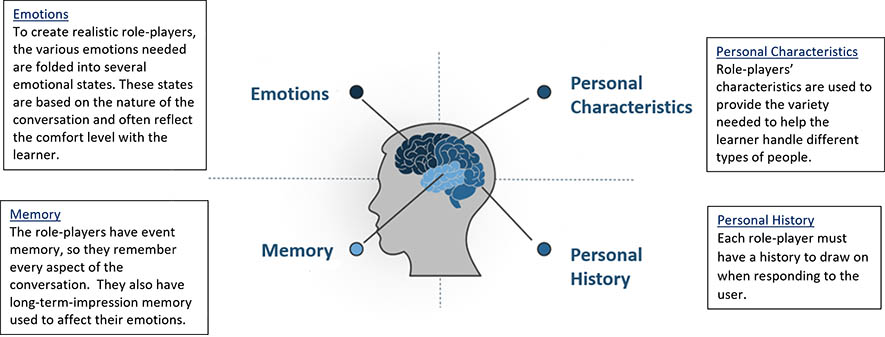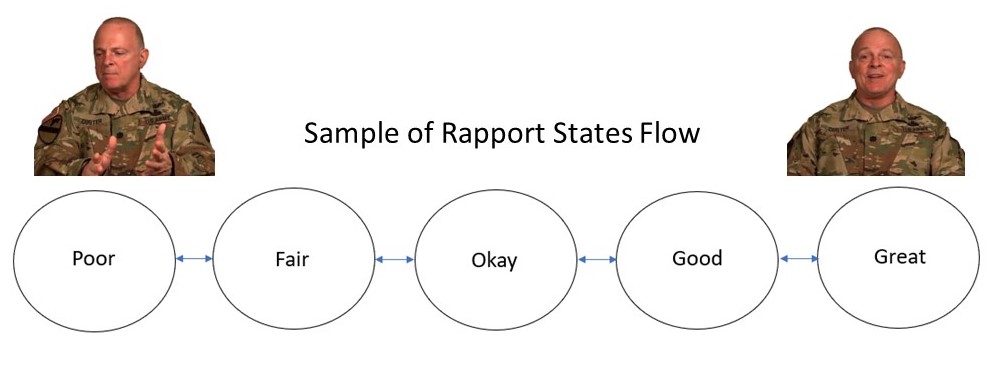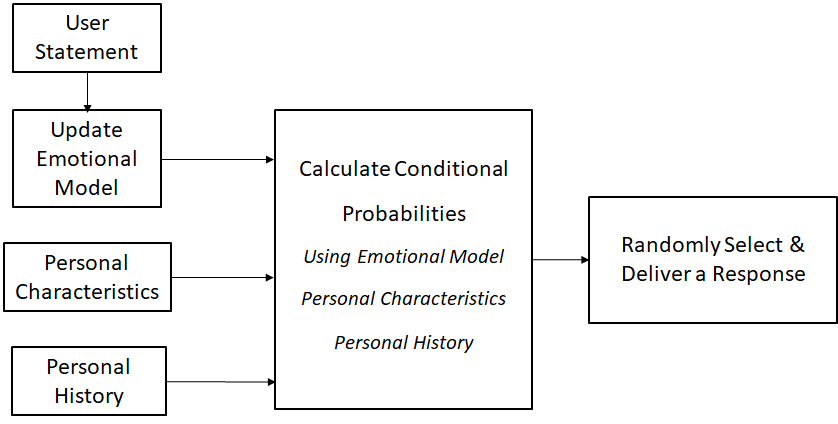Realistic Virtual Human Role-Players
PeopleSim® Makes Virtual Role-Players Feel Real. Watch Video
The PeopleSim® virtual role-player technology was designed to emulate real people, which requires the role-players to have (1) emotions, (2) a memory, (3) personal characteristics, and (4) a personal history.

Creating Realistic Conversations
Learners normally start the conversation with our role-player leading to a series of exchanges, until either one of the participants ends the conversation. For each statement selected, PeopleSim® will deliver an appropriate role-player response. Several responses are written for each statement to ensure there are always enough options to cover all conceivable role-player conditions.

Emotions Affect the Role-Player's Response
During our training design phase, we identify the necessary emotions required for the virtual role-player. These emotions are then grouped and organized into categories known as "states." Typically, these states reflect the level of rapport with the learner, but they may also account for other conditions, such as the willingness to make a lifestyle change or to make a purchase.
The emotional model is built on numerical values associated with each learner's statement, which serve as inputs for a highly parameterized system. By adjusting these parameters, our virtual role-players are programmed to behave in a highly realistic and natural manner, ensuring an immersive and effective learning experience.

Memory of the Past Affects the Role-Player's Response
The role-player's event memory encompasses all logical consistencies, including the ability to remember past discussions and maintain consistency. The scripts include the potential for learner mistakes, so the role-player is able to hold the learner accountable. For instance, the role-player may respond, "I already told you that I didn't complete my homework. Weren’t you listening?"
The role-player also has a long-term impression memory that affects the influence of learner statements on the relationship between the learner and the role-player. When a positive relationship is established, an offensive statement will have a diminished negative impact on the relationship, as role-players tend to be more forgiving of individuals they like. Conversely, if the relationship is poor, the role-player will perceive the statement more negatively, exacerbating its adverse effect.

Personal Characteristics and History Ensure Response Variety
Each role-player is developed with multiple character versions, or personalities, to capture a range of common behaviors. These various character versions are also scripted to possess unique personal histories. For instance, in the employee-coaching training, a role-player may have a personality that leads her to be argumentative, blaming, or overly sensitive, with each version featuring a different job-performance history. This diversity of character versions enhances the realism and depth of interactions, enabling learners to encounter a variety of scenarios and effectively develop their skills in handling different situations.

Selecting Role-Player's Responses
Each time a learner selects a statement, the emotional model is updated. PeopleSim® calculates conditional probabilities of each potential response using the emotional state, personal characteristics, and personal history and then randomly selects one. The virtual human role-player delivers the response and the role-player's behavior is consistent for the remainder of the conversation.

